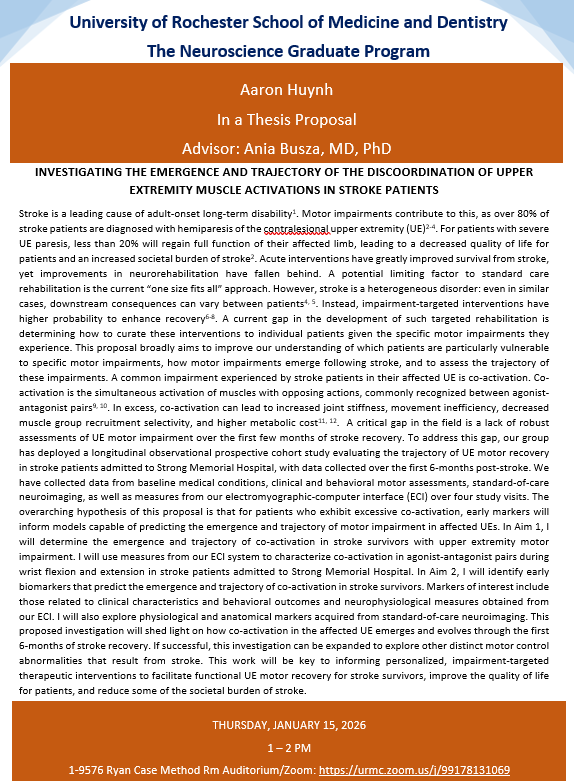Thesis/Defense Presentations
Thesis/Defense Presentations
"Investigating the emergence and trajectory of the discoordination of upper extremity muscle activations in stroke patients" - Thesis Proposal
Aaron Huynh - PhD Candidate, Neuroscience Graduate Program

Jan 15, 2026 @ 1:00 p.m.
Medical Center | Ryan Case Method Rm (1-9576)
Host: Advisor: Ania Busza, MD, PhD